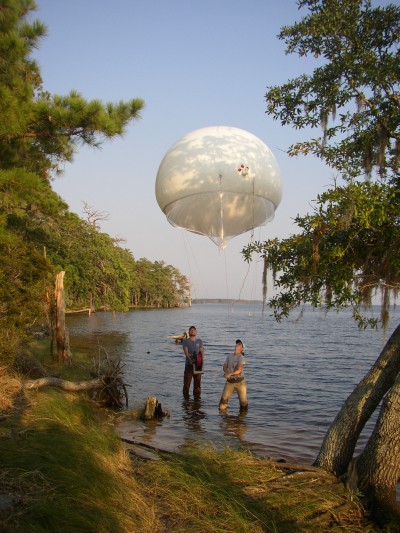RALEIGH — Although not as many headlines about sweeping changes in state government are expected during the current legislative session, one major proposal is already in the works.
Officials with the state Department of Environment and Natural Resources, or DENR, and the Department of Cultural Resources say they are hammering out the details for transferring the state park system, the zoo, natural science museums, aquariums and Jennette’s Pier from DENR to Cultural Resources.
Supporter Spotlight
Some worry that the protection of natural resources, the main mission of state parks, will get shortchanged if parks are moved to a state department more geared toward attracting customers.

Gov. Pat McCrory announced the plan two-thirds of the way through his Feb. 4 State of the State address before a joint session of the General Assembly, which would have to approve the transfer.
McCrory said the move would yield efficiencies and savings and would move the zoo, state aquariums and parks “from the Department of Natural and Environmental Resources to the department that actually manages attractions as part of its mission, and that’s Cultural Resources.”
The proposal would mean a huge shift of staff and responsibilities away from DENR, with more than 1,000 state employees spread out over 50 sites around the state. In turn, Cultural Resources would more than double in size.
The legislature made similar transfers during the last few sessions that have trimmed DENR, cut its budget and limited its responsibilities to environmental enforcement. All were done in the name of efficiency and cost savings.
Supporter Spotlight
But little money apparently was saved. A 2012 legislative study of the potential efficiencies in a similar merger found only minimal savings of roughly $201,500 that, according to the study, would be offset by the cost of the consolidation. A similarly large move of the state divisions of Forestry Resources and Soil and Water Conservation from DENR to the Department of Agriculture and Consumer Services cost $972,000 to implement.
So far, there have been few details about the most recent proposed transfer. McCrory’s office did not return a request for information on the plan or the process.
Confirmation that the proposal was in the works went out to employees of the departments in a series of emails sent out the night of McCrory’s speech, starting with a joint statement to their respective department by their secretaries, DENR’s Donald R. van der Vaart and Susan W. Klutz of Cultural Resources.

“This realignment will allow the DENR attractions and the DCR assets to bring their collective expertise, experience and talents together to strengthen our wonderful properties and to engage visitors to experience the best our state has to offer,” they wrote.
Klutz followed up with an email to her staff saying she was excited to bring to the new additions the department’s “vast knowledge of engaging visitors.”
Molly Diggins, president of the Sierra Club’s N.C. chapter, said environmental and conservation organizations will be keeping a close eye on the changes. There are not enough details to take a position on the proposal, she said, and it is a large enough move that it will take time.
“This change cannot be made quickly,” she said. “You can’t easily carve out one department.”
And it will take time, she said, for the mission of the parks system to mesh with Cultural Resources. Diggins said the fear about the seeming lack of acknowledgement of the parks’ conservation mission is real.
“They seem to be minimizing the role of the state parks [in conservation],” she said. “The question is does this signal a change in direction?”
Diggins said administrative, budget and other changes will be closely monitored as the change moves forward.
Park Vets Wary
As upbeat as the administration’s announcement was, it had an ominous ring to some park service veterans and advocates, especially since none of the statements from senior officials mentioned the park system’s key role in conservation.
“When I came to work, I knew our main emphasis was on protecting natural resources,” said Jody Merritt, a retired veteran of state parks and a former superintendent of Fort Macon State Park in Atlantic Beach. “While people use them, our job was to protect them now and for future generations.”
Merritt questioned whether Cultural Resources is ready to take on protection of natural resources, which is not in the department’s mission statement. There are some park lands that should not be treated as attractions, he said. And there’s worry about how the move will affect long-running relationships with conservation groups that have donated lands to the state trusting DENR’s commitment to conservation.
“I have to wonder if that trust is going to be there with Cultural Resources,” Merritt said.
Sam Bland, a retired superintendent of Hammock Beach State Park in Swansboro, said he’s also worried that priorities like protection of natural resources and research might suffer under the reorganization.
“We understood that as stewards of the properties, they should remain as much as possible as habitat,” he said. “The amusement of people shouldn’t be the justification for preserving it.”
Few Details Forthcoming

DENR spokesman Drew Elliot said the department officials are currently working with McCrory’s office and Cultural Resources on the plan, and he expects details to emerge soon.
Elliot also said that there are no plans to move the state’s Natural Heritage Program or the Clean Water Management Trust Fund, both of which work closely with the parks system on conservation projects.
He said the department would likely hold conversations about the plans with a number of stakeholders, including conservation groups.
Elliot said he’s not sure if the plan will come out as part of McCrory’s budget, which is expected to be released sometime in the next two weeks, or will be a part of a separate package.
Either way, the legislature will be involved in reviewing and potentially modifying the proposal.
State law allows the governor to shift departments, but if the move effects existing state laws — as this proposal would — the governor is bound by a process for agency transfers in the state constitution.
Under the process — set out in Article III, Section 5 — the governor has to submit a plan detailing the transfer to the General Assembly no later than 60 days after the start of a session. The legislature then has the right to disapprove of the proposal or modify it through joint resolution of both chambers. If the legislature does nothing, the proposal takes effect after adjournment of the session.







